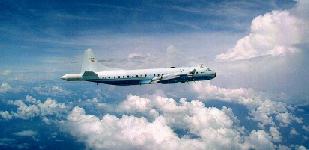FASTEX
Fronts and Atlantic Storm Track Experiment
PROJECT DATES
01/01/1997 - 02/28/1997
Project Location
Shannon Ireland, North Atlantic Ocean
PROJECT DESCRIPTION
The primary goal of the FASTEX field program was to advance the scientific understanding necessary to enable detailed diagnosis and prediction of the life cycles and effects of eastern oceanic storms and their associated cloud and precipitation systems. FASTEX took place during January and February 1997 over the North Atlantic Ocean.
Objectives:
- Increase the scientific understanding of the intensification process of eastern Atlantic extra-tropical cyclones and the role performed by precipitating clouds
- Provide a test for various "adaptive" observational strategies designed to place dropsonde observations in places crucial to improved numerical forecasts of cyclone development
- Provide a quantitative description of the mesoscale organization, of precipitation at various stages of the life-cycle of the extratropical cyclone, and tropopause folds and dry intrusions
- Construct 3-D kinematic fields over the cyclone domain suitable for input into mesoscale data assimilation models
- Gather datasets from which heat and moisture budgets and the vertical distribution of heating by cloud systems can be calculated.
The ELDORA radar on the NCAR Electra aircraft flying out of Shannon Airport to storms over the Atlantic Ocean
west and south of the UK. Photo courtesy Mike Strong.
west and south of the UK. Photo courtesy Mike Strong.
CONTACT INFORMATION
Principal Investigators:
- Jacques Testud, et al.
Project Manager:
- Krista Laursen
- Dick Friesen NCAR/EOL
Data Manager:
- EOL Archive NCAR/EOL/DMS
